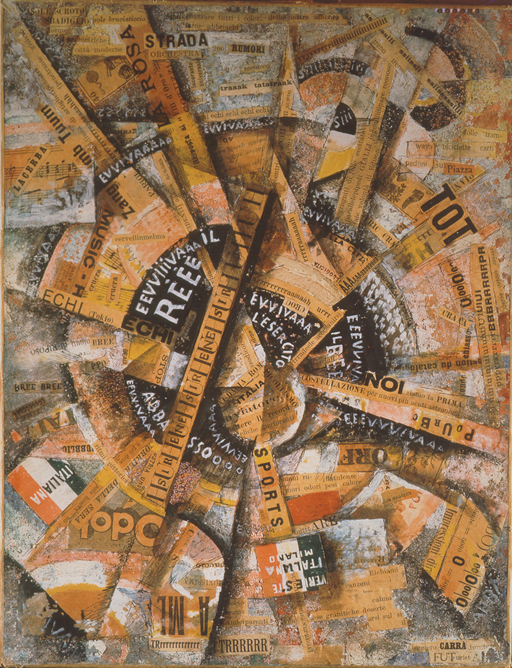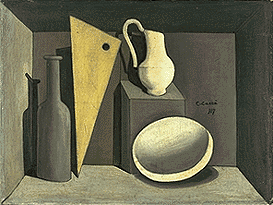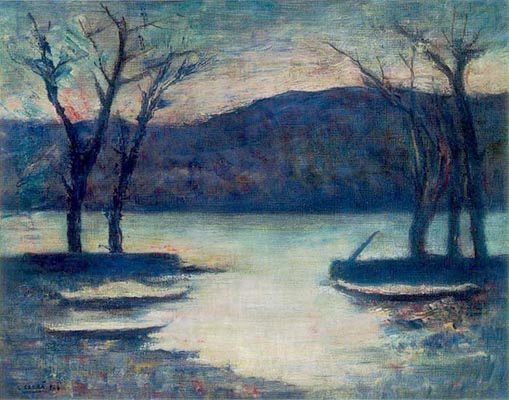Carlo Carrà (1881—1966)
Get a Carrà Certificate of Authenticity for your painting (COA) for your Carrà drawing.
For all your Carrà artworks you need a Certificate of Authenticity (COA) in order to sell, to insure or to donate for a tax deduction.
Getting a Carrà Certificate of Authenticity (COA) is easy. Just send us photos and dimensions and tell us what you know about the origin or history of your Carrà painting or drawing.
If you want to sell your Carrà painting or drawing use our selling services. We offer Carrà selling help, selling advice, private treaty sales and full brokerage.
We have been authenticating Carrà and issuing certificates of authenticity since 2002. We are recognized Carrà experts and Carrà certified appraisers. We issue COAs and appraisals for all Carrà artworks.
Our Carrà paintings and drawings authentications are accepted and respected worldwide.
Each COA is backed by in-depth research and analysis authentication reports.
The Carrà certificates of authenticity we issue are based on solid, reliable and fully referenced art investigations, authentication research, analytical work and forensic studies.
We are available to examine your Carrà painting or drawing anywhere in the world.
You will generally receive your certificates of authenticity and authentication report within two weeks. Some complicated cases with difficult to research Carrà paintings or drawings take longer.
Our clients include Carrà collectors, investors, tax authorities, insurance adjusters, appraisers, valuers, auctioneers, Federal agencies and many law firms.
We perform Carlo Carra art authentication, appraisal, certificates of authenticity (COA), analysis, research, scientific tests, full art authentications. We will help you sell your Carlo Carra or we will sell it for you.

Carlo Carra was an Italian painter, a leading figure of the Futurist movement that flourished in Italy during the beginning of the 20th century. In addition to his many paintings, he wrote a number of books concerning art. He was long a teacher in the city of Milan. Carrà was born in Quargnento, near Alessandria (Piedmont). At the age of 12 he left home in order to work as a mural decorator.

Patriotic Celebration 1914
In 1899-1900, Carrà was in Paris decorating pavilions at the Exposition Universelle, where he became acquainted with contemporary French art. He then spent a few months in London in contact with exiled Italian anarchists, and returned to Milan in 1901. In 1906, he enrolled at Accademia di Brera in the city, and studied under Cesare Tallone. In 1910 he signed, along with Umberto Boccioni, Luigi Russolo and Filippo Tommaso Marinetti the Manifesto of Futurist Painters, and began a phase of painting that became his most popular and influential.

Still Life with Triangle 1917
Carrà’s Futurist phase ended around the time World War I began. His work, while still using some Futurist concepts, began to deal more clearly with form and stillness, rather than motion and feeling. Carrà soon began creating still lifes in a style he, along with Giorgio de Chirico, called “metaphysical painting”. Throughout the 1920s and 1930s, the metaphysical phase gave way to a somber style akin to Masaccio’s. An example from this period is his 1928 Morning by the Sea.

Inverno Sul Lago
He is best known for his 1911 futurist work, The Funeral of the Anarchist Galli. Carrà was indeed an anarchist as a young man but, along with many other Futurists, later held more reactionary political views, becoming ultra-nationalist and irredentist before and during the war, as well as by Fascism after 1918 (in the 1930s, Carrà signed a manifesto in which called for support of the state ideology through art). The Strapaese group he joined, founded by Giorgio Morandi, was strongly influenced by fascism and responded to the neo-classical guidelines which had been set by the regime after 1937 (but was opposed to the ideological drive towards strong centralism). He died in Milan.

Futuristic Painting, Man on Horse
Still wondering about an Italian painting in your family collection? Contact us…it could be by Carlo Carra.
Reviews
1,217 global ratings
5 Star
4 Star
3 Star
2 Star
1 Star
Your evaluation is very important to us. Thank you.
